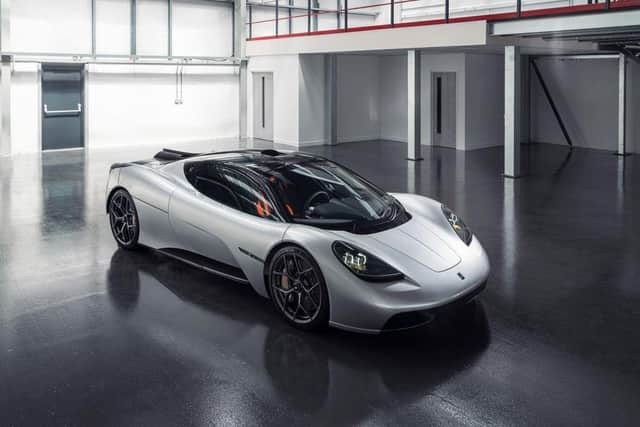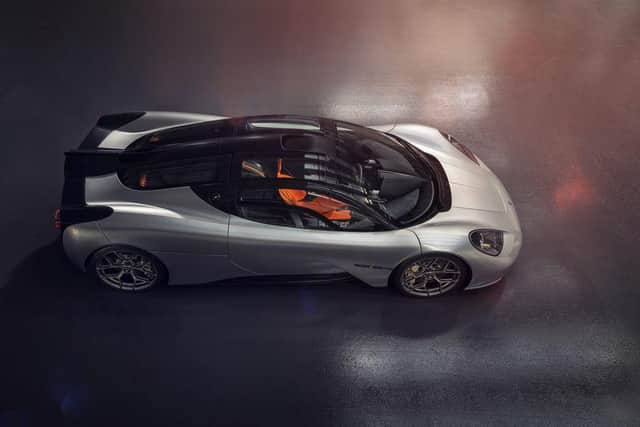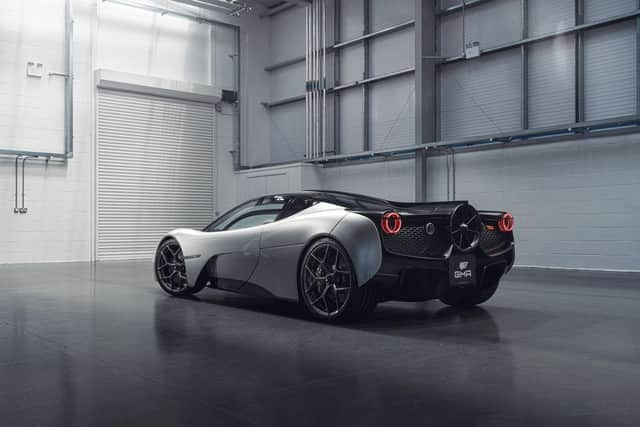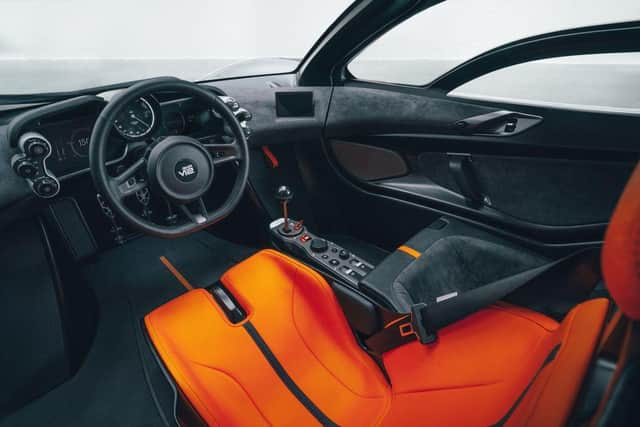Gordon Murray T.50 - Mclaren F1 designer reveals all-new 654bhp, 980kg supercar
Legendary formula 1 and sports car designer Gordon Murray has officially unveiled his newest project - the T.50.
Designed to be the “purest, most driver-focused” supercar ever, the Gordon Murray T.50 is a spiritual successor to Murray’s most famous creation - the McLaren F1 - and has been developed by Murray’s design house Gordon Murray Automotive (GMA) to improve on the F1 in every way.
Advertisement
Hide AdAdvertisement
Hide AdIt uses cutting edge technology in everything from engine design and aerodynamics to materials and construction and will be, according to its creators, the lightest supercar in the world at just 986kg.


‘Lightweighting’
To attain that sort of weight in a car just slightly smaller than a Porsche 911, the T.50 makes extensive use of ultra-lightweight carbon fibre. The entire monocoque and the car’s body panels are made from the super-strong material favoured by F1 teams and in total weigh a mere 150kg. Titanium fixings are used widely and the glass is 28 per cent thinner than a typical supercar’s in order to save precious grams. Even the mid-mounted engine is designed to be as light as possible while offering eye-opening performance.
Engine
Powering the T.50 is a naturally aspirated 3.9-litre V12 developed specifically for the car by Cosworth, which weighs just 180kg. Producing 654bhp is the highest-revving production car engine ever built, reaching a peak of 12,100rpm. It’s also one of the most responsive, says Murray, hitting its red line in just 0.3 seconds. Thanks to the T.50’s waif-like weight, the car has a power to weight ratio of 663bhp/tonne - more than any other non-turbo road car. And, in response to demand from potential customers, it sends that power to the rear wheels via a short-throw six-speed manual gearbox.


Performance
GMA says the T.50 is not chasing power or top speed figures and its engine is designed for “optimum performance” not to reach a prescribed power or acceleration target. As such, it hasn’t yet announced performance figures for the car but says it will entertain and engage on low-speed daily trips as well as driving on the open road. Nonetheless, with more than 650bhp and weighing less than 1,000kg, expect it to deliver the kind of pace that helped make the F1 famous.
Aerodynamics
Core to ensuring the T.50’s delivers an unrivalled driving experience are Murray’s 50 years of experience designing racing and road cars, with aerodynamics that GMA says rewrites the rulebook for road cars.


The most obvious example of this is a 40cm ground-effect fan that dominates the rear of the car. Linked to underbody aero panels and active rear aerofoils, the fan helps force the T.50 to the road, increasing its grip as the speed builds.
All around the car, Murray and his design team have used their skills to enhance the car’s aerodynamics without the use of “unsightly” scoops, vents and wings. The car features six individual aero modes, ranging from an “everyday” auto setting to a high-downforce mode that increases downforce by 30 per cent, a streamline mode that reduces drag in aid of straight line speed, and a VMax mode that pulls in extra torque from the car’s starter-generator in search of the absolute top speed.
Design
The car’s look has also been largely defined by Murray’s desire for clean lines that aid the car’s performance. At 4.3m long, 1.85m wide and just 1.15m tall, it’s low and sleek and simple, with just a hint of the F1 about its slippery silhouette. Dihedral doors give access to the cabin, while gullwing panels to the rear open to reveal the Cosworth V12.


Advertisement
Hide AdAdvertisement
Hide AdInside, the T.50 revives the famous three-seat layout of the F1, with the driver positioned centrally and an “ergonomic bubble” of controls and instruments arranged around them. Murray says the emphasis in the car is on the analogue, with proper physical controls for all the key functions. Two LCD instrument displays are the only compromise to the digital, tucked either side of a huge analogue rev counter. Every buyer is invited to meet with Murray to personalise the interior and exterior of their car and to have their seat, pedals and steering wheel fitted specifically to them.
Price
Only 100 examples of the T.50 will be built, costing £2.36 million before local taxes, with construction scheduled to begin in 2022.